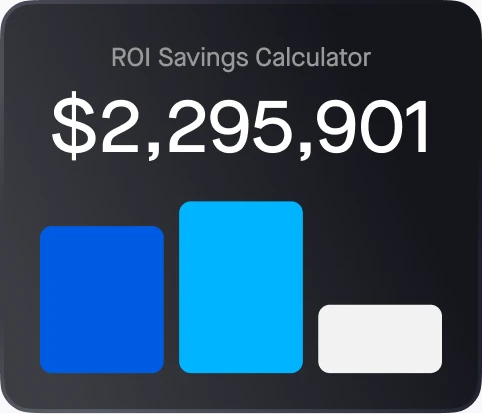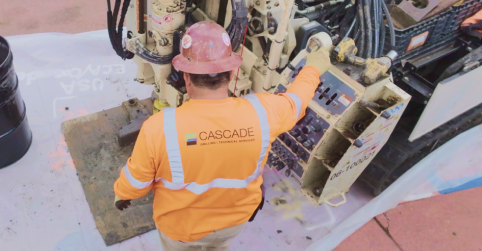In the construction industry, keeping track of valuable equipment and machinery is a constant challenge. With multiple job sites, high-value assets, and tight project timelines, the risk of lost, stolen, or underutilized equipment can impact both productivity and profitability.
That’s where construction asset and fleet tracking comes in. By giving companies real-time visibility into the location, usage, and condition of their assets, tracking technology helps optimize operations, reduce costs, and improve project outcomes.This blog explores the importance of equipment monitoring in construction, how it works, and how Motive’s asset tracking software & hardware helps construction businesses protect and maximize their investments.
What is construction asset and equipment tracking?
Construction asset tracking refers to the use of GPS, telematics systems, and IoT (Internet of Things) technology to monitor the real-time location, status, and performance of equipment and machinery on and off job sites.
Tracked assets can include:
- Heavy machinery (e.g., excavators, loaders, bulldozers)
- Power tools and portable equipment
- Forklifts
- Trailers and vehicles
- Generators, pumps, and other job site essentials
With the right asset tracking system, construction teams gain complete visibility into where their equipment is, how it’s being used, and whether it’s operating as expected.
Why construction asset tracking is essential
1. Reduce equipment loss and theft
Construction sites are high-risk environments for equipment loss. According to industry estimates, equipment theft costs U.S. construction companies hundreds of millions of dollars annually.
Asset tracking helps mitigate this risk by:
- Providing real-time GPS location of assets
- Triggering alerts for unauthorized movement or off-hours activity
- Enabling quick recovery of stolen items
2. Improve equipment utilization
Without visibility into asset usage, it’s difficult to know which equipment is being overused, underutilized, or sitting idle. Asset tracking systems give fleet managers data to:
- Reallocate unused assets across job sites
- Schedule usage more effectively
- Right-size equipment purchases or rentals
Improved utilization leads to better ROI on owned equipment and more cost-effective operations.
3. Streamline maintenance and extend asset lifespan
Regular maintenance is critical to keeping equipment running safely and efficiently. Asset tracking systems that integrate with video telematics can:
- Track engine hours and usage patterns
- Schedule preventive maintenance based on real-time data
- Alert teams to performance issues before they lead to breakdowns
This proactive approach reduces unexpected downtime and extends the lifespan of high-cost machinery.
4. Increase job site productivity
Knowing where your equipment is — and whether it’s available — helps eliminate time wasted searching for tools or waiting for the right machinery. With accurate location data and usage tracking, teams can:
- Locate assets instantly across job sites
- Schedule equipment deliveries and pickups with precision
- Minimize delays and keep projects on track
5. Improve cost control and project margins
Tracking assets helps identify inefficiencies, reduce rental dependency, and avoid unnecessary equipment purchases. When you have clear data on utilization and movement, you can:
- Reduce overhead costs
- Make better-informed decisions
- Improve forecasting and planning
In an industry where every dollar counts, asset visibility provides a significant financial advantage.
How construction equipment tracking works
Effective asset tracking systems typically include three key components:
- GPS trackers or IoT devices
Installed on each asset, these devices transmit data such as location, engine hours, and usage history. Devices vary in size and capability depending on the asset type. - Wireless connectivity
GPS and usage data are sent in real time over cellular or satellite networks to a centralized platform. - Fleet management software
All asset data is aggregated into a single dashboard, allowing teams to monitor location, status, maintenance, and movement history across all job sites.
Some systems also offer geofencing, usage alerts, and performance analytics to further enhance visibility and control.
Motive’s asset tracking solution for construction
Motive offers an end-to-end asset tracking platform built for the unique needs of the construction industry.
With Motive, construction companies get:
- Real-time GPS tracking for powered and unpowered assets
- Instant alerts for unauthorized movement, usage, or downtime
- Integrated maintenance tools to schedule and track equipment servicing
- Centralized visibility into all assets from a single dashboard
- Easy-to-install, rugged hardware built for harsh job site conditions
Whether managing one site or hundreds, Motive gives you the tools to protect your equipment, reduce waste, and increase operational efficiency.
Conclusion
Construction asset and equipment tracking is no longer a nice-to-have — it’s a necessity for staying competitive in a demanding industry. With increasing pressure to deliver projects faster, safer, and within budget, visibility into your equipment is critical.
By investing in a reliable asset tracking solution like Motive, construction businesses can take control of their equipment, reduce losses, and unlock greater productivity across every job site.




